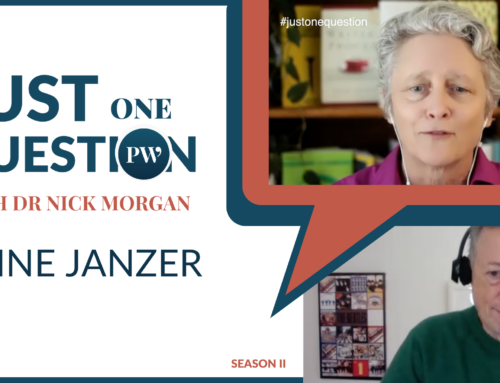This is the fifth and final post in a series about writing a book. Having just finished a new book on body language, brain science, and how people communicate, due out in May 2014 from Harvard, I’m posting a brief series on writing – what I’ve learned. Is it true that everyone who’s sentient has a book inside waiting to be expressed? What are the best ways to crank out a book-length manuscript? And once you have, what about publishing it? What does that terrain look like?
Last time I discussed actually writing the book. That happy chore out of the way, the author faces the single most difficult part of the whole process: marketing and selling your book.
I say it’s difficult because most authors – naturally enough – are focused on the book, not on what happens after completing it. It’s enough to get the book over the finish line, the typical author thinks, let the publisher worry about marketing and selling the book.
That’s human nature and it makes sense, but it’s not enough in the world we live in now.
There are simply too many books published each year – a million or more in the US alone – to rely on destiny, or fate, or even good word of mouth to get your book the attention it deserves. And you certainly can’t rely on the publisher. Publishers have outsourced most of what they used to do, and what’s left is essentially proofing, printing and distributing your book.
Ironically, these activities used to be the province of what was called a printer in the Victorian period, and into the 20th century. A publisher was an editor who found authors and books and actually worked with the author to make them great – and then figured out how to sell them.
Then, in the 20th century, publishers integrated vertically and bought up the printing side of the business in order to maximize profits and control. Now, that’s essentially all they’re doing.
Back to your book. You need a new finish line. It’s not completing the manuscript – it’s seeing it on the bestseller list. How do you get there?
BTW, let go of the idea of a “Book Tour.” Many writers still have that fantasy about a limo pulling up to the door, whisking you off to NYC, where you speak in an exclusive wood-paneled club to the literati, you drink champagne, and your fortune is made. After that, it’s simply a matter of showing up at bookstores – or perhaps stadiums – around the country to talk of your book to adoring crowds.
Unfortunately for the fantasy, the number of authors who will fill bookstores, let alone stadiums, has become very small. You need to already have a loyal – even fanatical – following to fill a house for a book reading or talk.
For example, I’m a huge fan of Patrick Rothfuss, the author of The Name of the Wind and The Wise Man’s Fear, two magnificent books of fantasy. He was able to fill a large auditorium at Boston University a while back, and by the time I got there, it was SRO. He held forth for a half-hour or so, and then took questions, and he was just as funny and clever as I expected the author of those books to be.
Very satisfying, but only for someone who was already a fan of Rothfuss’ books. It’s hard to command that kind of following before your book has been published. And again, the number of authors who generate that kind of excitement are few.
So the traditional publisher won’t help much. You probably won’t be offered a book tour. Word of mouth is too chancy. What’s left? How do you get your book the hearing – or viewing – it deserves?
Here’s how. Five Steps.
1. Decide who will read your book – find your community. There are some exceptions, but most authors think that everyone in the world will want to read their book. Get over that, and focus on who really will read your book. Segment that audience as specifically as you can. If your book is about careers after college, you might target college seniors. If your book is about the conflicts between Armenians and Turks, you might target the Diaspora in the US. But you’d probably have to target either side more particularly. If your book is about new trends in IT, you might target heads of IT departments at major corporations. And so on. The point is to figure out who actually will read your book.
2. Figure out what your community does – connect with those activities. Next you want to see what those people do, where they do it, what they read, how they read it, what their biggest celebrations are, and so on. How can you connect with them? Do they meet at rallies, do they all wear a certain kind of shoe, or do they all drink Starbucks coffee? It’s time to get creative and figure out how you can hitch your book wagon to their particular star. The idea is to meet your community where it lives, and reads.
3. Talk it up, and talk it up some more – don’t be shy. Once you’ve figured out how you’re going to connect to your community, then start getting the word out. There are two schools of thought on this activity. One is to send out a reasonable number of tweets, Facebook postings, LinkedIn updates, and whatever else you can stand to do. The other is to be relentless and essentially crush all the categories and send out messages 24/7. I’m resistant to this latter idea, because it seems like overkill and it feels intrusive, but the argument is that people are so information overloaded that the only way to stand out is to be the loudest and most frequent talker. Your call.
4. Create a sense of urgency – start a drive. If you can get all your peeps to buy your book on Amazon, say, on a certain day and between a certain set of times, then you can perhaps drive your book to #1 and bragging rights. Or you might start a giveaway of print books for those who buy Kindle versions during a set time period. And so on. Scarcity and competition add urgency to book buying, and that can help you create some momentum around your book.
5. Keep the buzz going – find new reasons and angles to promote your book. There’s a natural tendency for books to generate the most interest just before and at publication. Interest then wanes in a curve as the weeks and months tick by. You need to figure out ways to keep your book fresh. Last time I checked, Romeo and Juliet was still selling strongly, over 400 years later. That Shakespeare had a knack, didn’t he? How can you keep your book relevant and fresh in the eyes of your particular community?
Marketing and selling a book is a long-distance run, not a sprint. Don’t focus on the finish line of the publication date – that’s only the beginning of your journey to make your book count. Good luck. I hope your book finds the audience that it needs and deserves.








Was going through some old posts. Cool that you are a fan of Rothfuss. Makes sense. Agree he is great fun but Kvothe is ultimately a bit Mary Sue for my taste. Almost like a deliberate parody at times (Felurian).
You might also like China Mieville and Scott Lynch , at least his first book, Lies of Locke Lamora.
But if you haven’t read Joe Abercrombie, drop everything else. You are in for a real treat. I am esp. fond of the Heroes, but they are all incredibly fun.
Hi, Andrew — I know both Mieville and Lynch well — just finished Lies and am onto the next one. I’ll check out Joe A. And you’re right — if you follow Rothfuss’ blog you’ll see he’s something of a natural satirist. I think it creeps into the prose at times…